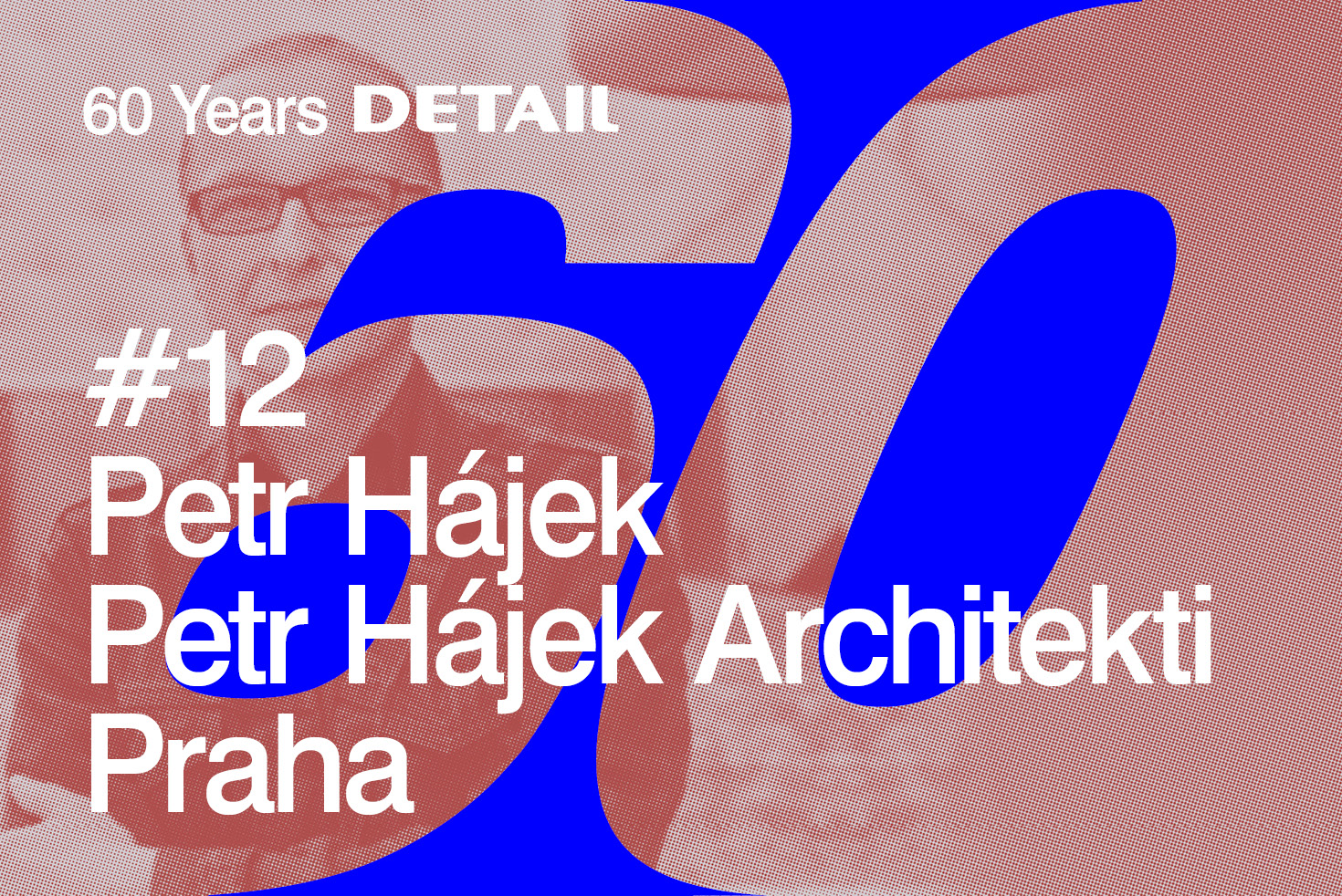An Exceptional Era: Petr Hájek on the Architecture of the 1960s – and in 60 Years from Now

To the Czech architect Petr Hájek, Detail acted as a door-opener both to Western architecture and to architectural construction when Czechoslovakia was still behind the Iron Curtain. His vision of the future is that new technologies, and even new kinds of human beings, might change architecture in a way that is as yet incomprehensible to us.
Detail was founded in the 1960s. What did this decade leave behind for us in terms of architecture?
The sixties were exceptional for their drive to look for new perspectives and experimentation. We are still making use of this energy, and not only in architecture. The list is long: the magnificent structures by Frei Otto or Buckminster Fuller, the TWA Flight Centre by Eero Saarinen, the Brion Cemetery by Carlos Scarpa, the artificial inner worlds of Verner Panton, the Plastic House by Dieter Schmid, Expo 67, but also Apollo 11, the A-7 pressure suit, the Beatles, Andy Warhol, DNA, Mary Quant…
When did you first come across Detail, and what do you associate with the magazine?
I first came across the magazine in the reading room of the National Technical Library in Prague in 1988. If I remember well, the issue I got hold of had an article about the staircase inside the Statue of Liberty in New York. It was kind of symbolic at the time, as in Czechoslovakia, which was behind the Iron Curtain, you weren´t allowed to travel outside the socialist bloc. Thus, we were not able to learn from world architecture on site, to study the constructions then and there. So for us, Detail magazine kept on opening windows to the insides of these structures. Thank you.
Where do you think architecture will stand in 60 years’ time? What issues will architects have to deal with, and what kinds of buildings will they be designing?
Personally, I don´t think architecture will have changed much sixty years from now. Our profession will be dealing with similar problems to the ones of our era. Supposedly, new technologies will bring new design solutions, better ecological scales, and new construction methods. I can imagine 3D-printed houses becoming a normal phenomenon, robotic buildings resembling Transformers from Hollywood movies or even “digital cities” … But in my opinion, the real shift will come with the genetic modification of mankind. The long-living and super-intelligent people of the future will perhaps have different needs and requirements than we do, and this might change architecture in a way that is now incomprehensible to us. Not as many architects might be needed, as their work might be substituted by creative algorithms and databases. As long as artificial intelligence, a meteorite, or a virus don´t meddle with these visions…
Petr Hájek (1970) is a Czech architect based in Prague. After studying architecture at the Czech Technical University and the Academy of Fine Arts in Prague, he co-founded the architecture office HŠH architekti, which terminated its activity in 2016. In 2009, he also established his own office, Petr Hájek Architekti. His work is driven by inspirations from interdisciplinary fields, and often experiments with new materials and technologies to leverage the architectural expression of his buildings.



